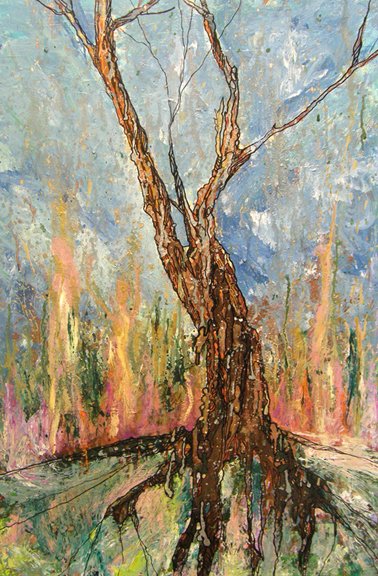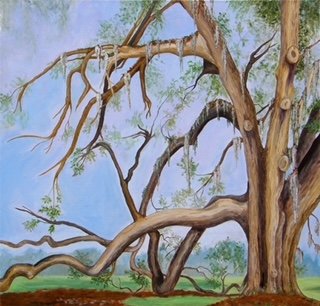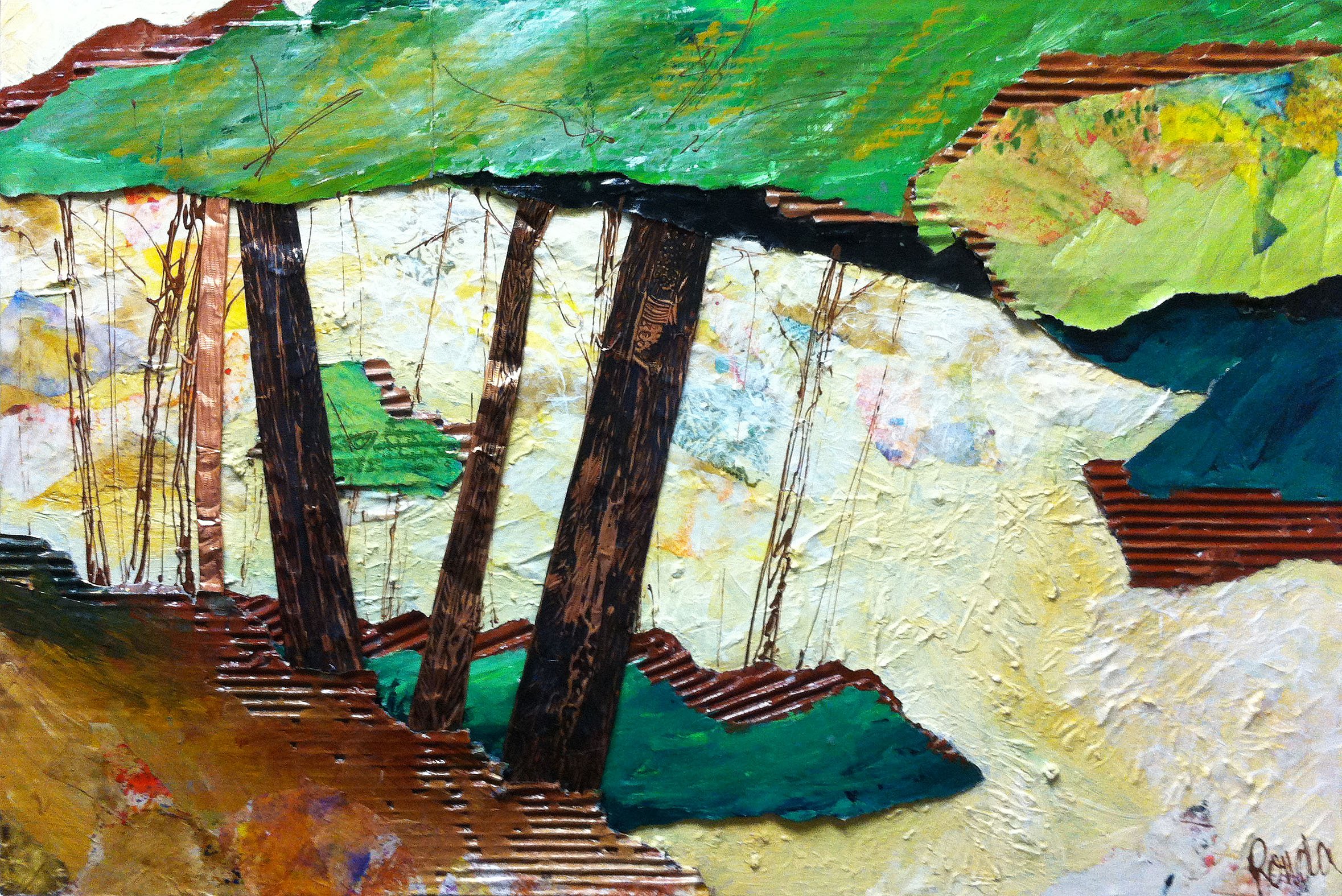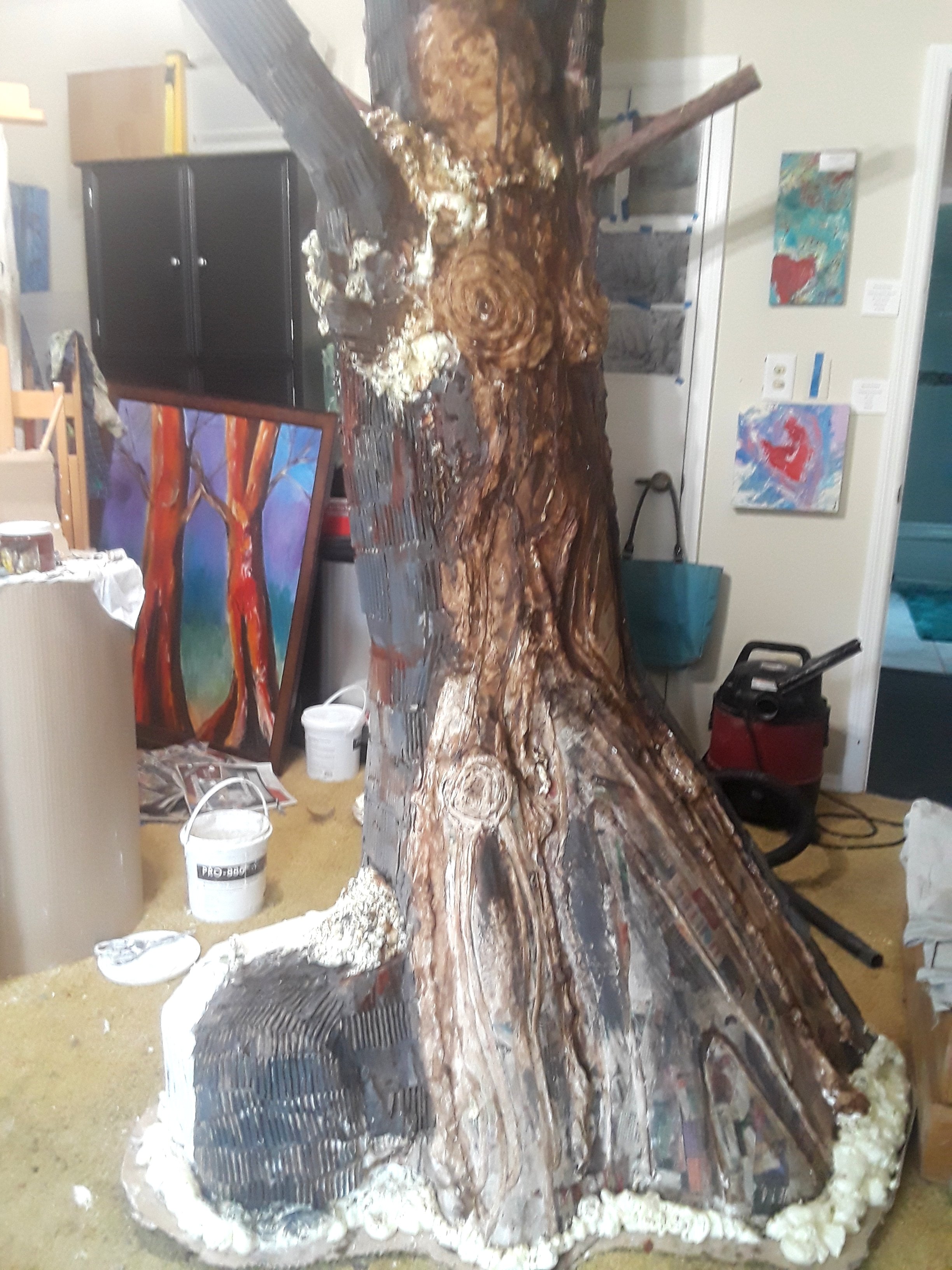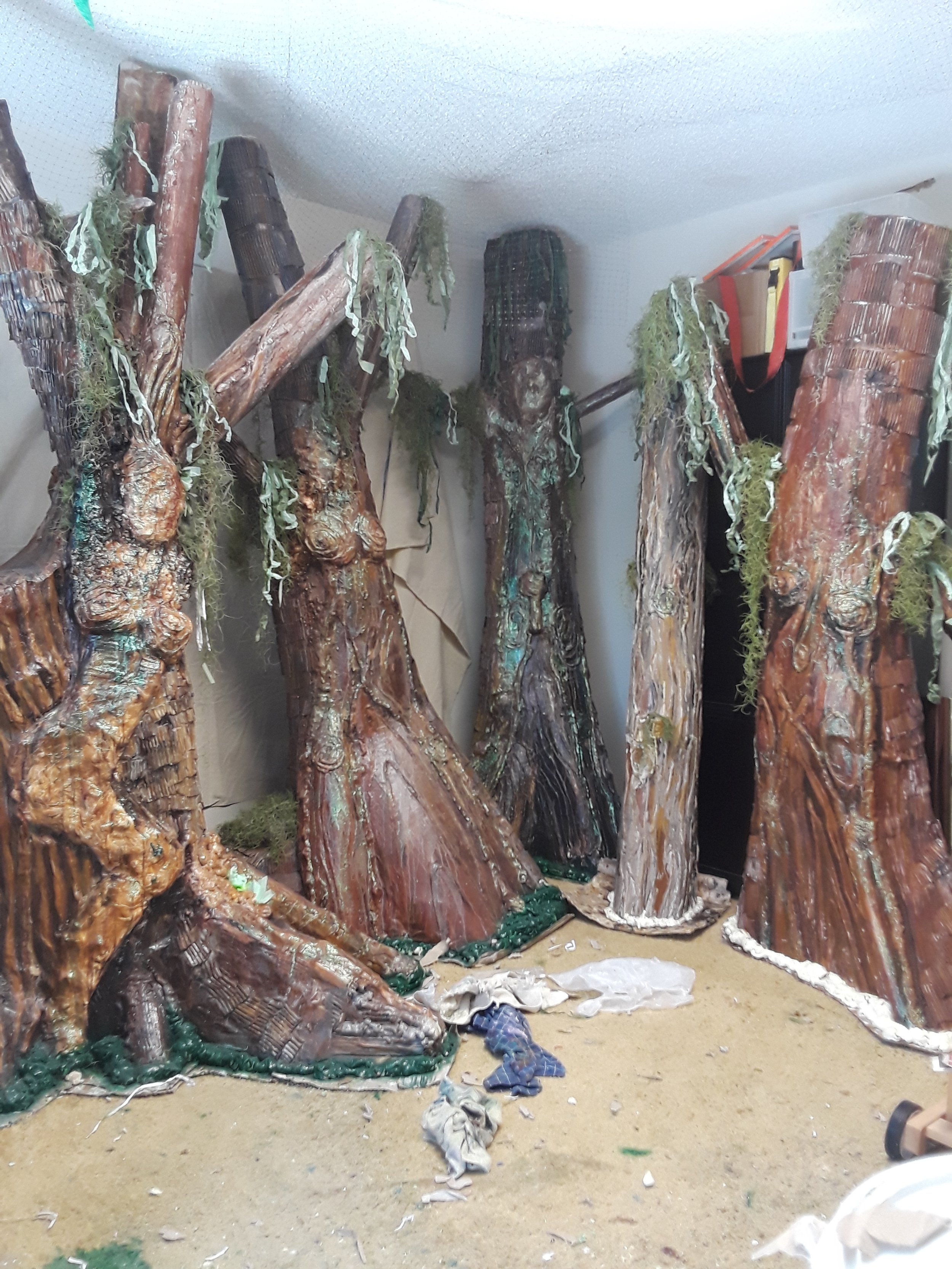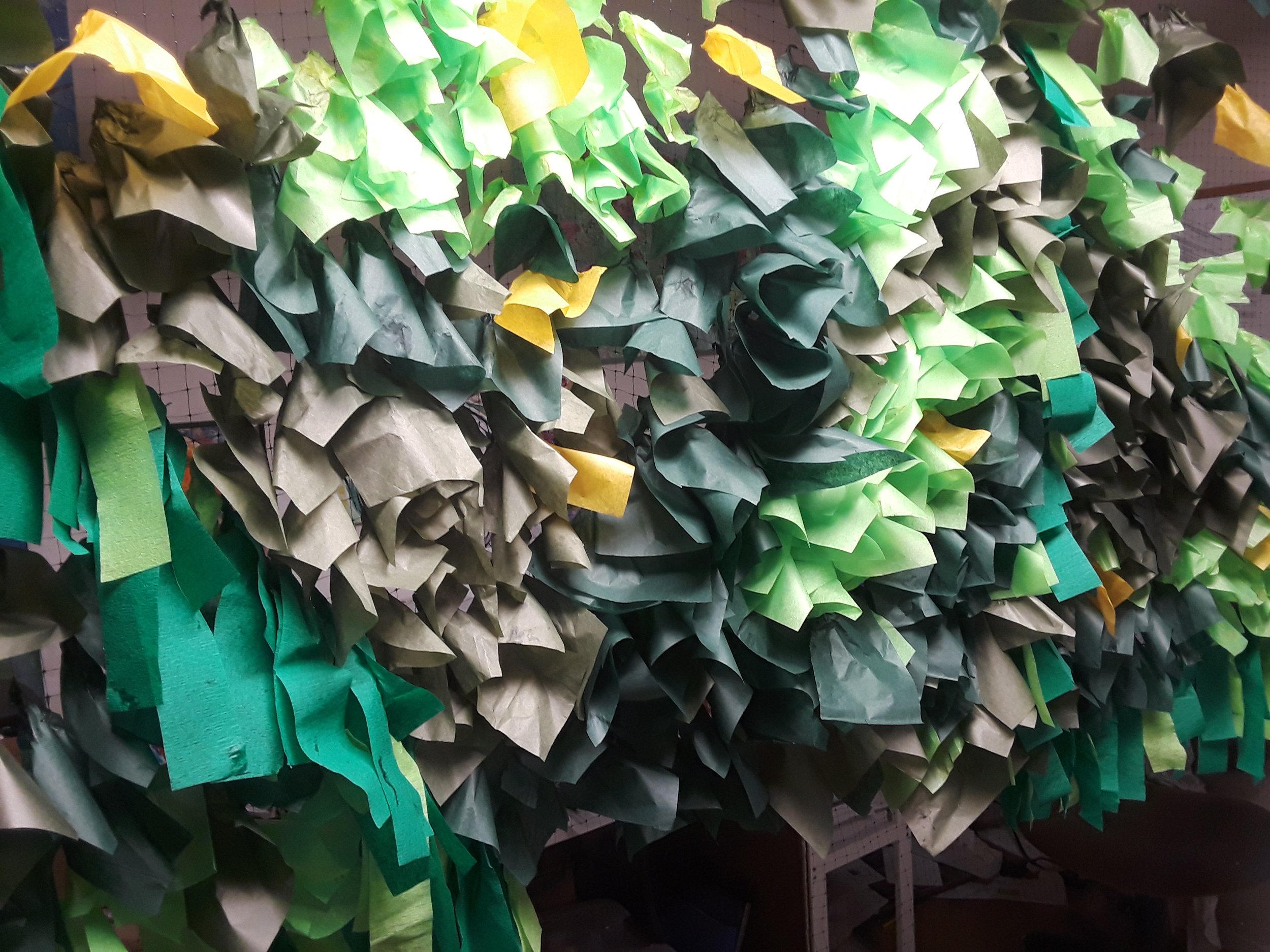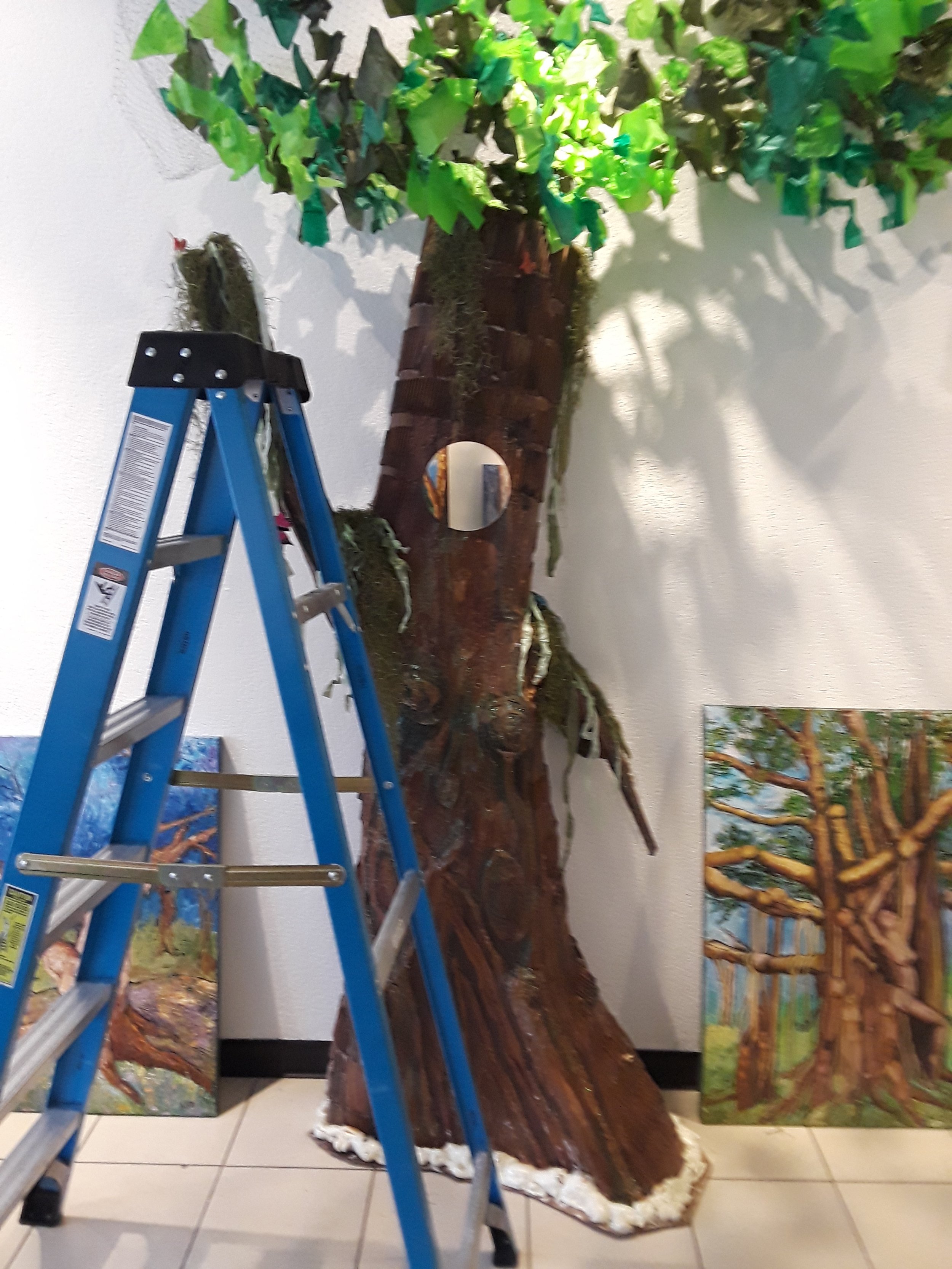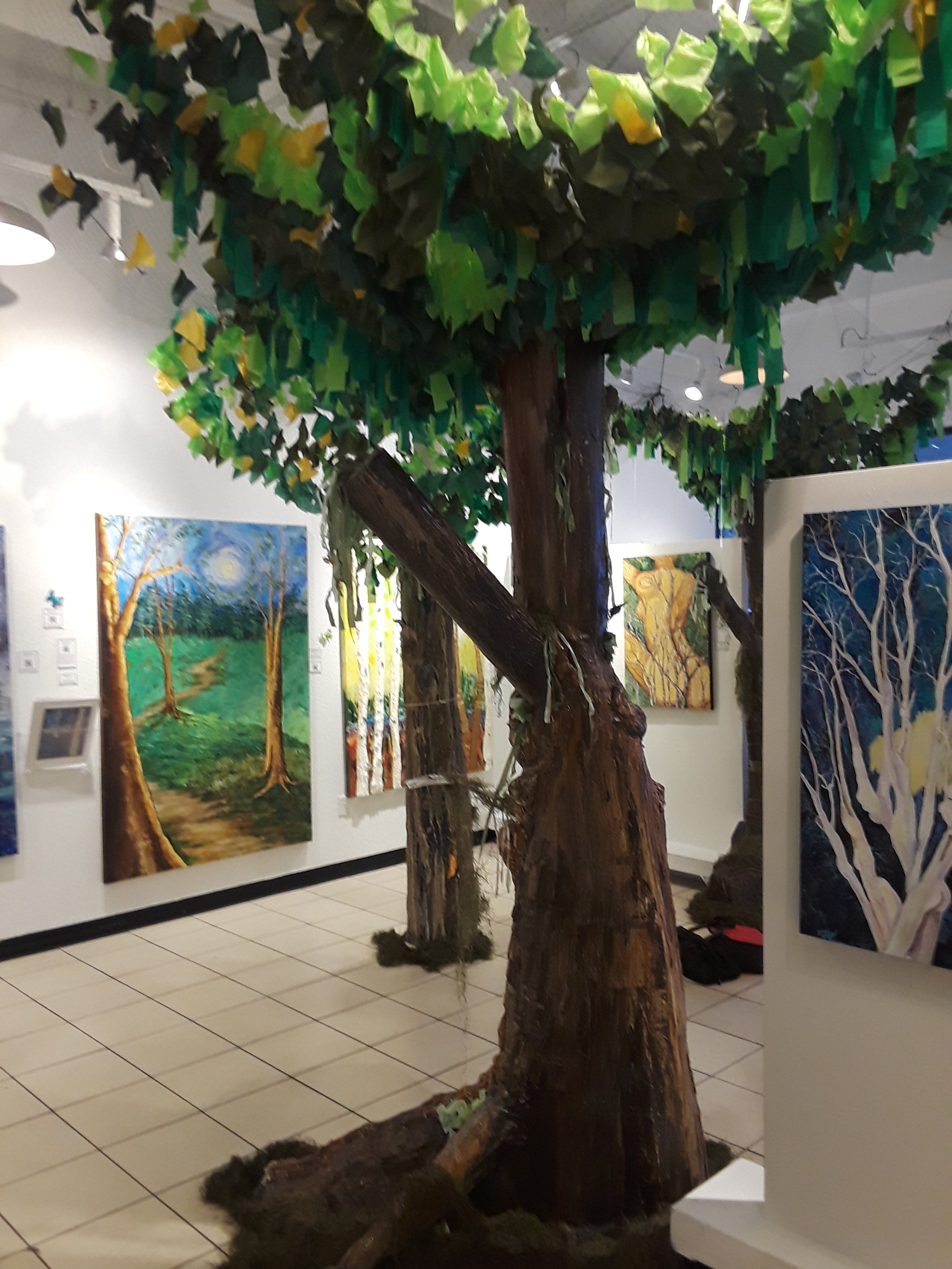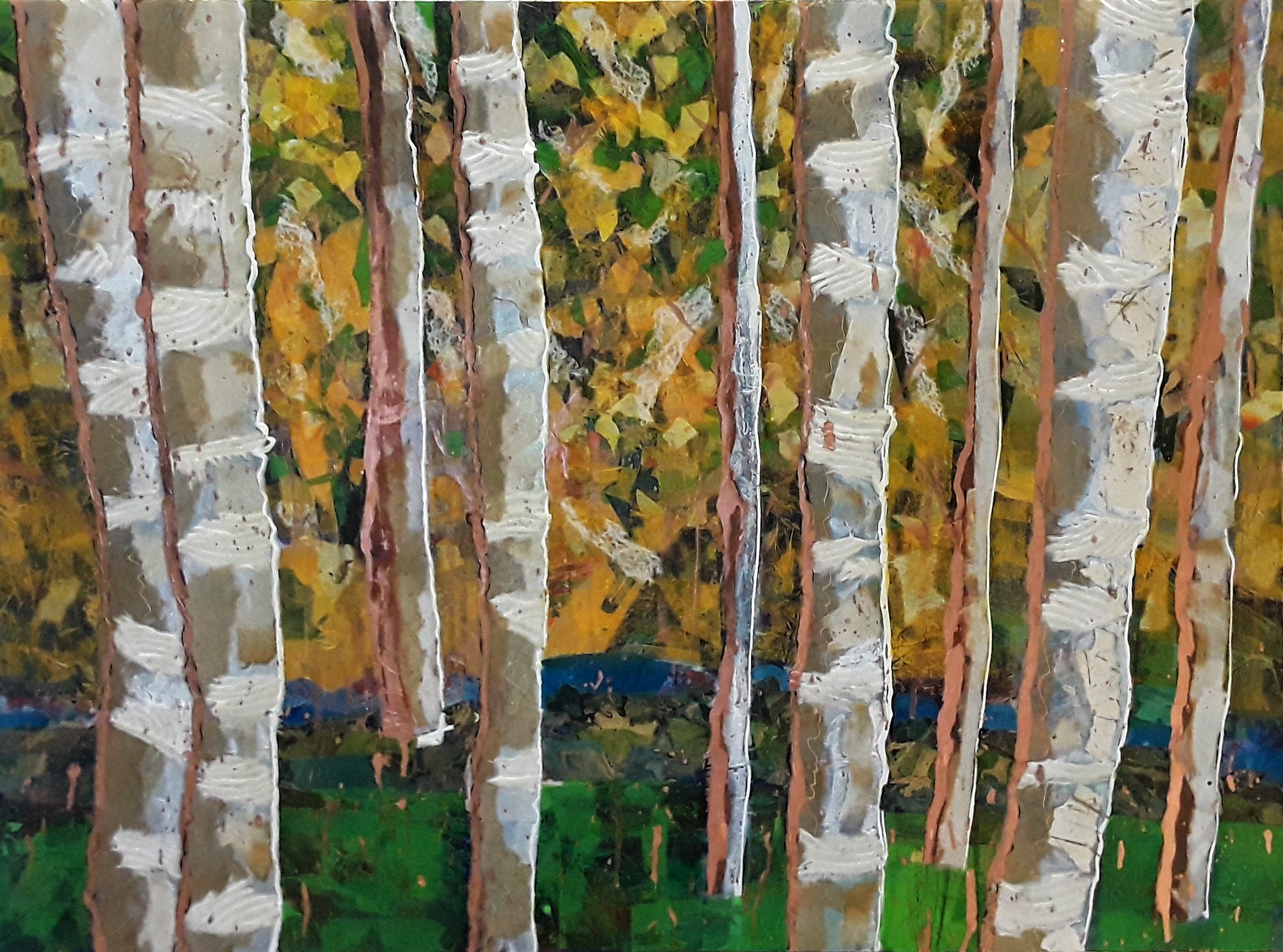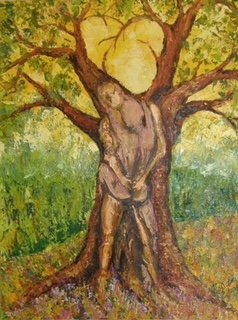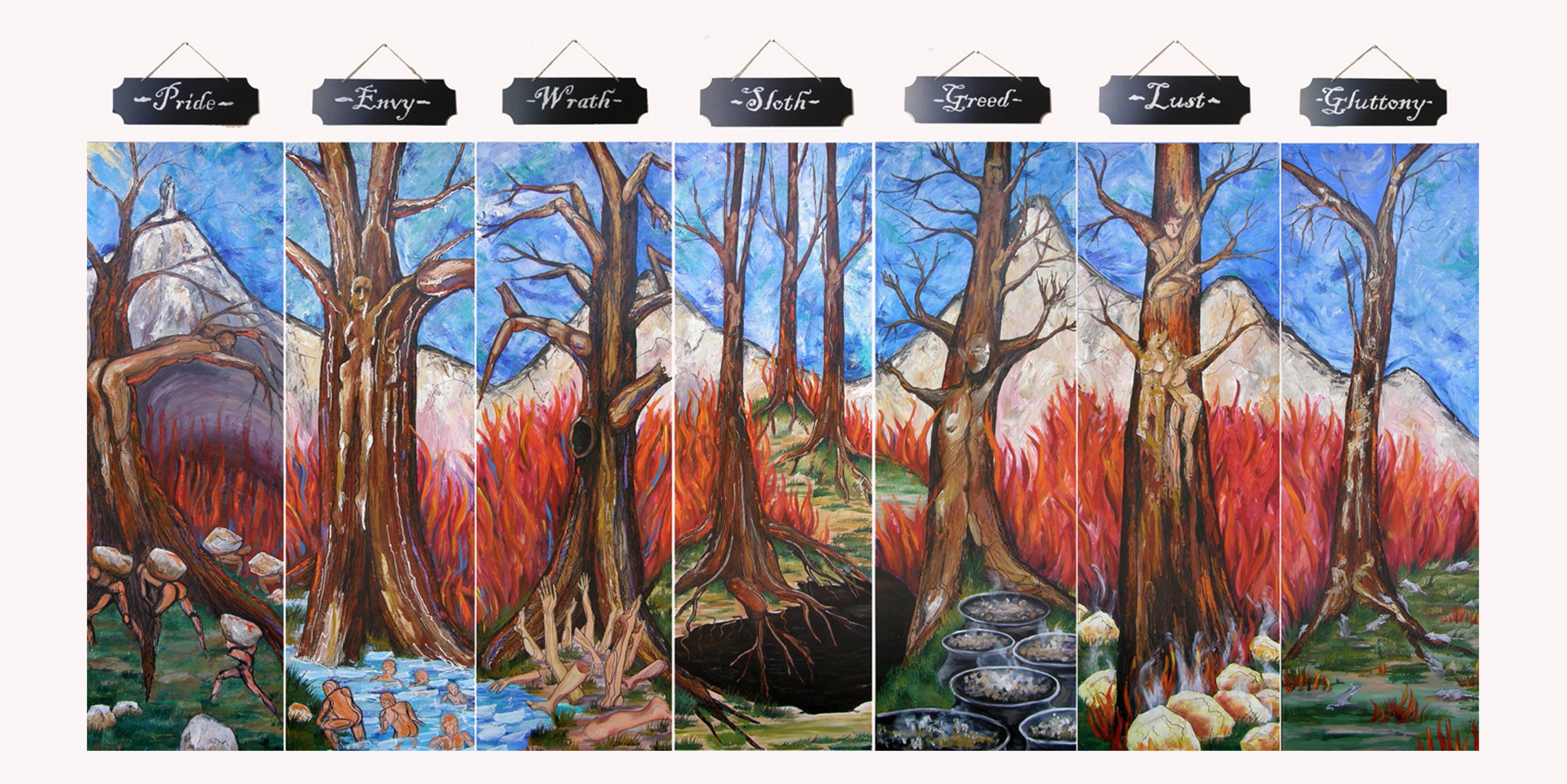Hi everyone! I plan to feature artists who incorporate recycled materials as part of their work. Here is my first interview as part of this series. Today’s artist is Ronda Richley, a prolific Central Florida artist who loves trees and incorporates recycled materials into her work which often features trees. Here is my interview with Ronda.
Central Florida artist Ronda Richley
Michelle: I have admired the richness of your artwork for quite some time. I have seen the breadth of your artistic talents as showcased on your website https://www.rondarichley.com/, from 2D pieces to more sculptural pieces particularly of trees featuring recycled materials, and even ceramics. Lots of inspiration to see there. There is lots of color, movement, lots of textural elements which give even your 2D pieces a sculptural quality. Tell us more about your style and how you’ve arrived at it over the years.
Ronda: I have been doing art for decades. In the beginning, I was a graphic designer and then started illustrating for my ad agency, First Impressions Advertising and Art. As time went on, I sold the business and moved to Los Angeles, where I started doing photo real illustrations in the Victorian style for various gift-ware products. I got tired of doing such tight art and wanted to loosen up, so I went back to grad school for my Masters. There, I loosened up so much that my work resembled Pollock’s but was done on ripped and re-stretched canvas with openings through to a backing. Eventually, I combined my realism with the energy of abstract work, and now (mostly) do highly textured, energetic, knife strokes on canvas. As I said, mostly. However, sometimes you will find me drifting into the realism but always with a twist—either dripping paint to create it or applying texture in spots.
Michelle: I see that you incorporate recycled materials into some of your 2D and 3D pieces. In this day and age when there is so much environmental degradation occurring at an ever-faster pace, it is admirable when artists try to reduce their environmental footprint by incorporating recycled materials into their artwork. The pieces also become educational and inspirational materials for artists and the public at large. Tell us more about your use of recycled materials in your pieces.
Ronda: I have always been looking for found objects to repurpose into my work and I never throw anything away! And have a love for mixed media for this reason. I have used (re-used!) papers, canvas, fabric, copper, wood, sawdust, plastic bottles, rubber tubing, cardboard, ropes, twines, and even paint from my palette. As I am painting, some thought will come to mind that “I wonder if I have…” or “what will make that texture…” and I will find it in one of my bins and use it in my work.
Michelle: Any tips on how artists can reduce the environmental burden from their artwork?
Ronda: How can you reduce the burden? Just don’t throw it out! There is a reason you have it. Ideas for you:
A. For recycling canvas:
Turn it upside down and repaint over it.
Cut it from the stretcher bars and cut it into strips and weave it or glue it onto something.
Use the backside of a stretched canvas for an area to do ceramics.
B. For recycling paint from your palette:
If acrylic, use a clear or white plastic lid for your palette (you use the bin it comes with for storing your brushes or paints!). When the paint has dried, peel it off the plastic, and use it in your mixed media—check out the back side of it as it is wonderful!
If oil, save the paper palette sheet and use it in a collage—tear it, cut it, whatever suits your fancy!
C. Plastic bottles, tubing etc:
Build your canvas around it for three dimensional or bas relief work.
Build your ceramics using it as a form.
Basically, just about anything can become a part of your work, and you never know…it may lead you into a different medium.
Michelle: Many of your pieces feature trees some of which have anthropomorphic characteristics. Tell us more about your inspiration for these pieces and whether there are hidden meanings behind them.
Ronda: The inspiration for my trees is basically my love for them. They are special and give us so very much, and most people don’t even notice them, respect them, nor look at them as living entities. They ARE living entities and need to be seen that way and protected. The figures in my trees are to personify them, giving the viewer a new look at trees, and hopefully, seeing them as a life form. Many people after seeing my art, has said they will never look at a tree the same way again.
Each of my trees tells a story. The meanings are sometimes obscure but many times obvious. “The Seven Deadly Sins” is about trees being punished for human folly. “Only the Spirits Remain” is about the Senator in Big Tree Park being burnt to the ground by a human. “Orlando’s First Lady” is the tree in Constitution Green that we saved from developers, and if you look closely at her you can find her spirit. I could go on and on as each and every one of my tree paintings has a story to be told. You need to explore this for yourself, as I only paint part of the story, and you need to finish it.
Michelle: Have you ever taken formal art classes or are you self-taught? Any words of inspiration for aspiring artists?
Ronda: I began my studies at the University of Cincinnati where I received my Bachelor’s of Fine Arts, and later received my Master of Studio Arts at California State University. I have also taken a few workshops so continue learning as new media strike my fancy. I have taught at the College and University Levels which I miss doing. Teaching keeps you fresh and involved in the art world. Going to art class would also do the same. Students feed their creativity off each other. There are a lot of self-taught artists out there and many are quite talented. Taking classes is a way of expanding their knowledge and developing more skills. I strongly urge you to go to workshops of an artist you admire, take some classes or go after that degree. Always strive to improve. If you just take one thing away from a class or a workshop, it makes that time well spent.
Michelle: For me art is a meditation, at times, a way to calm my mind from every day stresses. Other times, it is a way to express my emotions, my fears, happiness, anger. What is your motivation for doing art? Who or what inspires you?
Ronda: As far as my motivation for doing art, it is different as art has been my livelihood for nearly fifty years. I consider myself a process artist in that it is about doing any type of art. I play my music, and connect with the materials I am currently using. It is about making the art and it makes me happy. And that all varies depending upon my mood or if something has affected me and I find a way to express it.
Michelle: Any final words? Do you know of any other Florida or national artists incorporating recycled materials into their artwork? If so, could you share their contact information? (Their names and contact information will not be published on the blog, it is just leads for future blog posts).
Ronda: I follow Thomas Dambo from Copenhagen who creates huge trolls and hides them in the woods. He uses recycled skids for his work. https://thomasdambo.com/ and he has facebook, Instagram etc. He is my favorite artist, and if I were younger I would join his build team when he does work in the USA.
Also look at Eva Jospin https://mymodernmet.com/eva-jospin-cardboard-forests/ as she is amazing!



